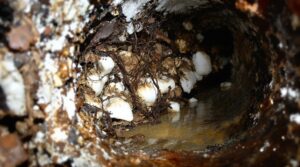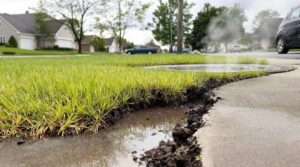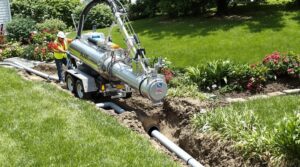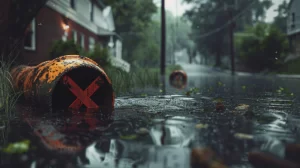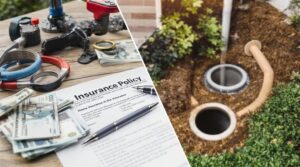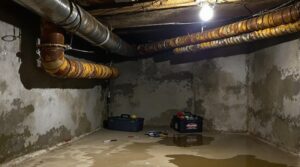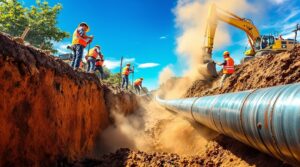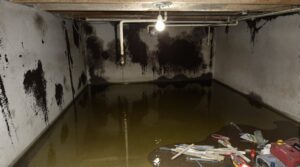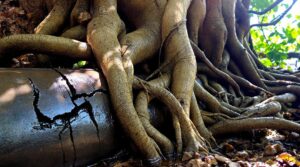Trenchless sewer line replacement costs average $2,900, with project ranges from $1,900 to $6,000. The price per linear foot varies between $135-$190 depending on the method used (pipe lining or pipe bursting). Short installations of 25-35 feet typically cost $1,500-$8,750, while longer runs of 75-100 feet can reach $25,000. Labor rates range from $60-$250 per hour, with additional municipal permit fees up to $1,000. Understanding the complete cost framework helps homeowners make informed decisions about their specific project requirements.
Key Takeaways
- Trenchless sewer line replacement typically costs between $1,900 to $6,000, with average projects around $2,900.
- Pipe lining costs $135-150 per foot, while pipe bursting ranges from $150-190 per foot for trenchless repairs.
- Short installations (25-35 feet) cost $1,500-$8,750, while longer installations (75-100 feet) can reach $25,000.
- Labor costs range from $60-250 per hour, with additional permit fees potentially adding up to $1,000.
- Trenchless methods offer faster completion and minimal property disruption compared to traditional excavation techniques.
Understanding Trenchless Sewer Line Replacement Costs
When considering trenchless sewer line replacement, homeowners typically face costs ranging from $1,900 to $6,000, with an average project cost of $2,900. This investment varies notably based on project scope, with costs calculated per linear foot: pipe lining ranges from $135 to $150, while pipe bursting costs between $150 and $190. Additionally, homeowners should factor in potential basement sewer line replacement expenses, which can significantly impact the overall budget if the existing system requires extensive repair or replacement. It’s crucial to obtain detailed estimates from contractors to understand the full extent of the financial commitment. Ultimately, investing in trenchless technology not only minimizes disruption but can also lead to long-term savings on maintenance and repairs.
A trenchless materials analysis reveals that project length considerably impacts total expenses. Short sewer lines of 25-35 feet may cost $1,500 to $8,750, while longer installations of 75-100 feet can reach $25,000. Aging homes with clay or cast iron pipes often require immediate replacement to prevent system failures.
Modern excavation techniques minimize surface disruption, making trenchless methods more cost-effective than traditional approaches. Professional installation, though initially more expensive, prevents costly errors and guarantees compliance with local regulations.
The depth and location of existing pipes influence overall costs, with deeper installations often requiring specialized trenchless solutions.
Regular inspections, costing $175 to $350, help identify potential issues before they necessitate complete replacement.
Key Factors That Impact Your Project Budget
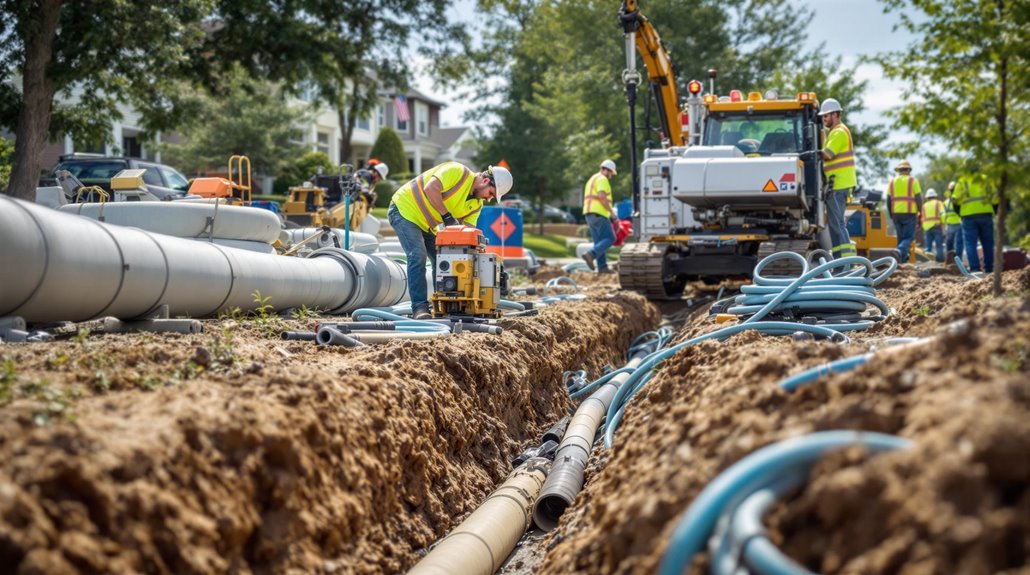
When calculating trenchless sewer line replacement costs, pipe length and material selection serve as primary determinants of the total project budget.
Labor expenses, which typically range from $60 to $250 per hour, constitute a significant portion of the overall cost structure. The location of sewer lines under patios or pools can significantly increase repair complexity and costs.
Municipal permits, potentially reaching $1,000, must be factored into the budget planning process alongside material and labor considerations.
Pipe Length and Materials
Two primary factors that prominently influence the cost of trenchless sewer line replacement are pipe length and material selection.
Project timeline estimation varies considerably based on the linear footage involved, with longer installations potentially benefiting from economies of scale. Costs typically range from $30 to $1,000 per linear foot, depending on project specifications. Trenchless methods can reduce overall project costs by minimizing landscape restoration expenses.
Pipe material selection impacts both initial costs and long-term durability.
Copper pipes, while expensive at $2-$8 per linear foot, offer exceptional longevity of up to 100 years.
More economical alternatives include PEX ($0.40-$2) and CPVC ($0.50-$1) per linear foot.
Cast iron and galvanized steel command premium prices of $8-$10 per linear foot, while ABS pipes present a middle-ground option at $1-$10 per linear foot.
Labor and Permit Expenses
Labor and permit expenses represent substantial components of trenchless sewer line replacement costs, encompassing both skilled workforce requirements and regulatory compliance measures.
Labor costs typically range from $60 to $250 per foot, varying based on project complexity and specific techniques employed. Skilled technicians utilizing specialized equipment for methods like pipe lining command higher rates due to their expertise.
Permit requirements add another layer of expense, with costs ranging from $30 to $500 depending on local jurisdictions. These permits guarantee compliance with municipal codes and regulations, often specifying particular pipe fittings and installation methods.
Professional contractors generally manage the permitting process, factoring local rules, proximity to public infrastructure, and potential landscape disruptions into their cost calculations. This regulatory oversight helps maintain quality standards and prevent future complications.
Comparing Traditional vs. Trenchless Methods
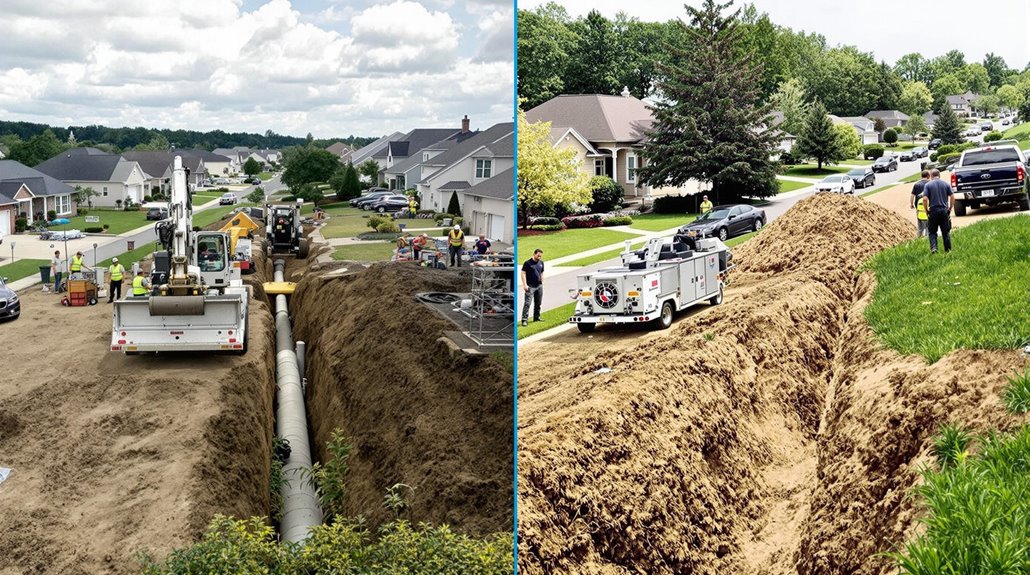
The fundamental differences between traditional and trenchless sewer line replacement methods center on their approaches to excavation, repair techniques, and overall impact on property. While traditional methods require extensive digging and disruption, trenchless technology minimizes excavation through small access points. These modern excavation techniques preserve landscape integrity and reduce restoration costs.
| Aspect | Traditional Method | Trenchless Method |
|---|---|---|
| Excavation | Extensive digging required | Minimal access points |
| Time | Days to weeks | Hours to days |
| Property Impact | Significant disruption | Minimal disturbance |
The choice between methods depends primarily on damage severity and site conditions. Traditional repairs may be necessary for completely failed pipes, while trenchless solutions excel in addressing damaged pipes under structures or critical infrastructure. Though trenchless methods have higher initial equipment costs, they typically offer superior long-term value through reduced labor, restoration, and maintenance expenses.
Benefits and Cost Savings of Trenchless Technology
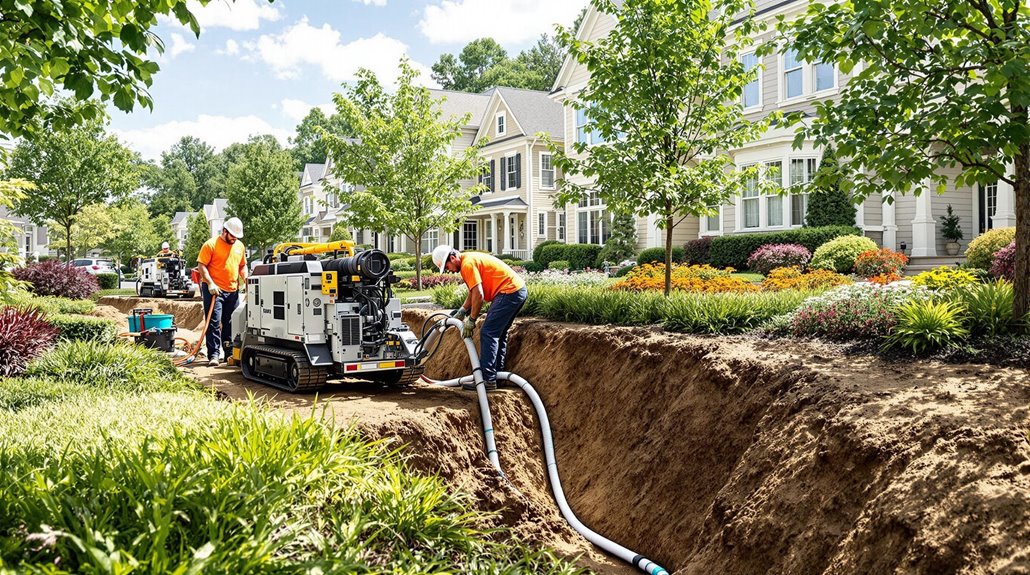
Trenchless sewer line replacement offers substantial cost benefits through reduced labor requirements and streamlined installation processes.
The technology's minimally invasive approach eliminates extensive restoration expenses by preserving landscaping, driveways, and other surface structures that would typically require repair after traditional excavation.
These initial savings, combined with the durability of modern trenchless materials and installation methods, create significant long-term value through extended service life and decreased maintenance needs.
Reduced Labor Costs
Slashing labor expenses stands as one of the primary financial advantages of trenchless sewer line replacement. The implementation of cost effective repairs considerably reduces workforce requirements, as smaller crews can complete projects efficiently with minimal excavation. Traditional methods typically demand extensive manpower and heavy equipment, while trenchless technology maximizes crew efficiency through targeted access points.
| Labor Factor | Traditional Method | Trenchless Method |
|---|---|---|
| Crew Size | Large teams | 2-3 workers |
| Equipment | Heavy machinery | Specialized tools |
| Excavation | Extensive digging | Minimal access points |
| Timeline | Extended duration | Rapid completion |
| Restoration | Substantial work | Minimal requirements |
The reduced labor costs translate to overall project savings of up to 50%, particularly when considering the elimination of extensive restoration work and shortened project timelines.
Long-Term Value Benefits
Four key aspects underscore the long-term value benefits of trenchless technology: material durability, cost efficiency, environmental preservation, and operational versatility. The implementation of durable materials and advanced techniques results in pipeline solutions lasting up to 100 years, while simultaneously reducing future maintenance requirements.
The minimal excavation approach largely decreases environmental impact and property restoration expenses, offering superior cost efficiency over traditional methods.
- Enhanced property aesthetics through preservation of existing landscapes and structures
- Peace of mind with corrosion-resistant, root-intrusion-proof pipeline solutions
- Increased home value through modern, sustainable infrastructure improvements
- Reduced ecological footprint for environmentally conscious property owners
The technology's adaptability to various pipe materials and damage levels guarantees thorough solutions for diverse applications, from minor repairs to complete system replacements.
Minimized Property Damage Savings
Substantial cost savings emerge from the minimized property damage inherent in trenchless sewer line replacement methods. The elimination of extensive excavation preserves valuable landscaping features, driveways, and hardscaping, greatly reducing restoration expenses.
Property owners avoid costly reconstruction of patios, sidewalks, and specialized landscaping elements. The preservation of existing property features serves as a form of preventative maintenance, protecting long-term property value.
With minimal access points required, trenchless technology maintains the aesthetic integrity of the property while reducing associated repair costs. The method's efficiency in preserving established trees, lawns, and utility structures eliminates the need for extensive replanting or infrastructure rebuilding.
This approach not only minimizes immediate restoration expenses but also protects against potential collateral damage that could necessitate additional repairs.
Essential Budgeting Tips for Sewer Line Projects
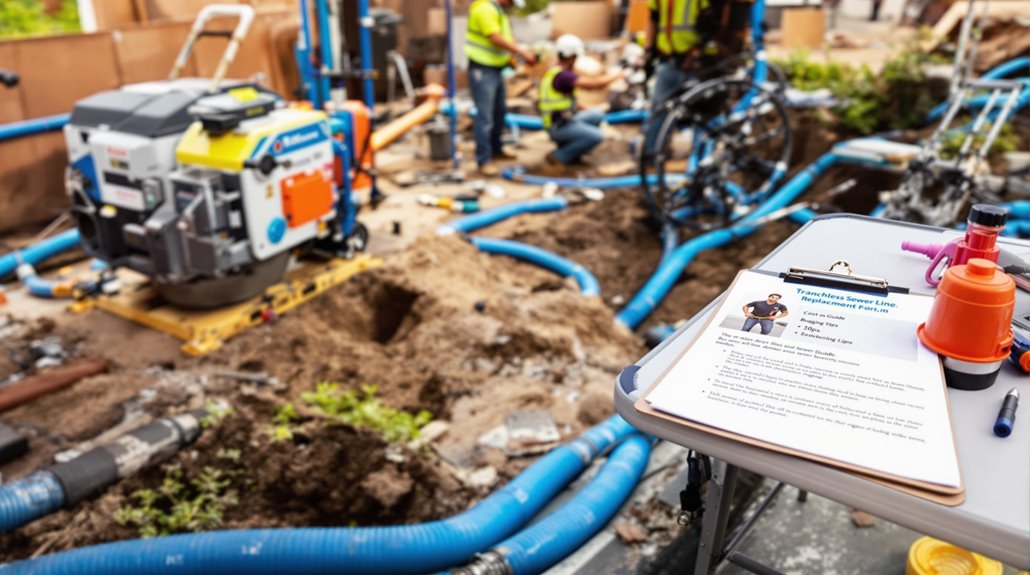
Planning a sewer line replacement project requires careful financial preparation and strategic budgeting to guarantee successful completion without cost overruns. Implementing effective budgeting strategies begins with determining total project costs through detailed material and labor estimations.
Property owners should collect multiple quotes from certified plumbers while factoring in location-specific variables and potential obstacles that may impact the final cost.
- Prevent financial stress by establishing a robust contingency fund for unexpected complications
- Protect your investment by choosing quality materials that offer long-term value
- Secure peace of mind through thorough project planning and cost analysis
- Maintain control over expenses with modern budgeting tools and tracking systems
Cost estimation must account for various factors, including pipe materials, length requirements, and local regulations.
Utilizing specialized budgeting tools and maintaining detailed records throughout the project helps guarantee efficient resource allocation and prevents unnecessary expenditures.
Exploring financing options and insurance coverage can provide additional financial flexibility while maintaining project momentum.
Hidden Expenses and Long-Term Cost Considerations
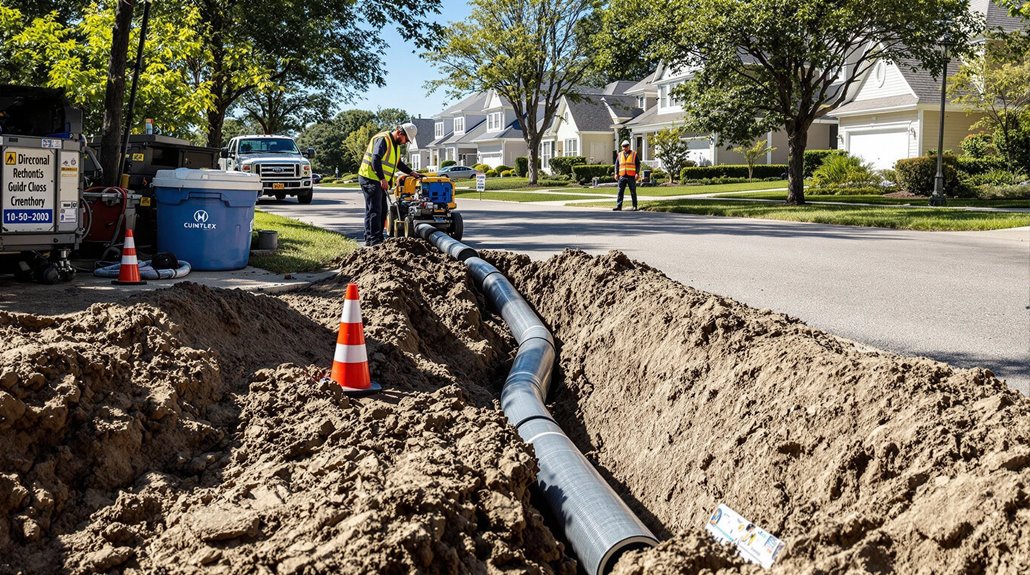
Understanding hidden expenses and long-term implications is crucial when evaluating trenchless sewer line replacement costs. While initial quotes may focus on basic installation charges, numerous hidden charges can greatly impact the total project cost. These include additional excavation requirements, demolition and restoration work, and potential relocation fees for heavy objects near sewer lines.
Future expenses should be carefully considered when comparing traditional versus trenchless methods. While trenchless repairs typically command higher upfront costs, ranging from $3,500 to $25,000, they often prove more economical long-term by minimizing property disruption and restoration needs.
Factors affecting long-term costs include pipe material selection, maintenance requirements, and project complexity. Large-diameter pipes, unusual shapes, and deeper installations can considerably increase expenses.
Property owners should also account for potential landscaping restoration and investigate warranty options to protect against unexpected complications. Understanding these cost factors enables more accurate budget planning and helps avoid financial surprises during sewer line replacement projects.
The Benefits Of Consulting A Public Adjuster
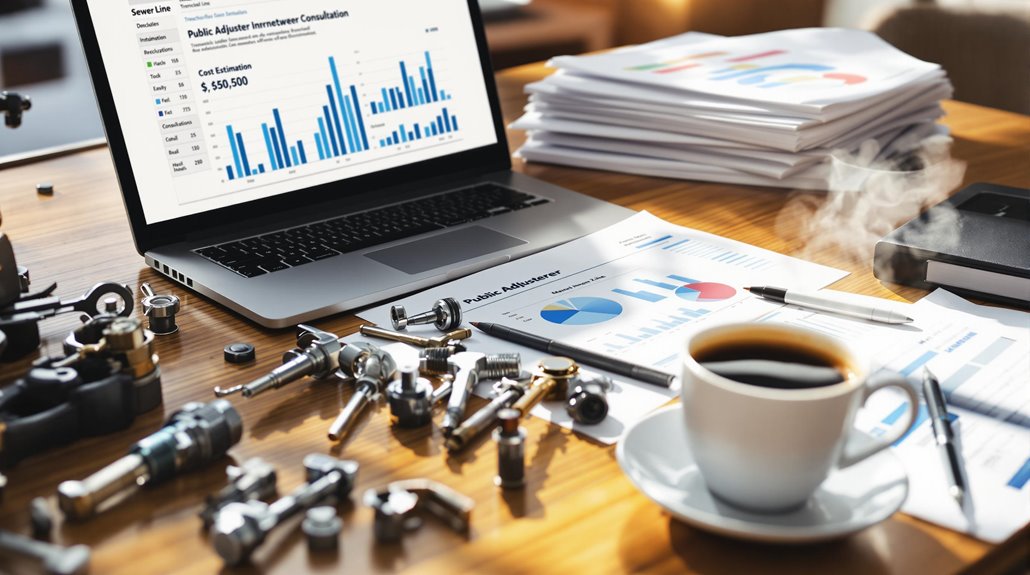
When dealing with sewer line replacement insurance claims, public adjusters provide specialized expertise to evaluate coverage and assess damage objectively.
Their professional guidance helps streamline the complex claims process while ensuring proper documentation of all damages and associated costs.
Research indicates that claims handled by public adjusters typically result in higher settlement amounts compared to those filed directly by property owners, making their services particularly valuable for extensive projects like trenchless sewer line replacements.
Studies show that utilizing a licensed public adjuster can increase insurance claim settlements by up to 500% for non-catastrophic property damage cases.
Expertise In Insurance Claims
During complex sewer line replacement projects, consulting a public adjuster can greatly improve insurance claim outcomes. These licensed professionals possess extensive knowledge of insurance policies, procedures, and claim strategies that maximize settlements.
Their expertise enables thorough documentation of damages, accurate repair estimates, and all-encompassing proof of loss preparation. Public adjuster benefits include skilled negotiation with insurance companies and meticulous attention to policy details that guarantees all covered repairs are properly addressed.
Working on a contingency fee basis, public adjusters typically charge 5-20% of the final settlement amount while delivering favorable outcomes for policyholders.
- Feel confident knowing an experienced advocate is fighting for your maximum settlement
- Experience peace of mind as complex paperwork and documentation is handled professionally
- Reduce stress by letting an expert manage insurance company negotiations
- Trust that your claim receives the detailed attention necessary for the best results
Objective Damage Assessment
Public adjusters bring an added layer of expertise through objective damage assessment practices that fortify insurance claims. Their systematic damage analysis encompasses thorough evaluations that extend beyond surface-level observations, incorporating advanced assessment tools to document both visible damage and functional impacts on sewer systems.
This methodical approach enables strategic planning for recovery efforts while identifying cost-efficient solutions like trenchless repairs.
The assessment process involves detailed documentation and collaboration between various stakeholders, ensuring transparency and accountability throughout the claims process.
Through objective evaluation, public adjusters help determine the most economical repair methods, validate damage extent for insurance purposes, and support informed decision-making regarding restoration options.
This systematic assessment ultimately facilitates accurate cost estimates and efficient resource allocation for sewer line repairs.
Streamlined Claim Process
Steering the complex insurance claims process becomes considerably more manageable through professional public adjuster services.
These specialists implement proven claim strategies while handling documentation, negotiations, and settlement procedures. Their expertise in policy negotiations and regulatory compliance guarantees thorough damage assessment and maximum claim value potential.
Unlike insurance adjusters who represent carriers, public adjuster fees are based on a percentage of the final settlement amount, aligning their interests directly with the policyholder.
- Experience reduced stress and anxiety with expert guidance through complex insurance procedures
- Gain confidence knowing your interests are professionally represented at every step
- Feel secure with detailed documentation and thorough property damage assessments
- Rest assured that experienced professionals are maximizing your claim's potential
Public adjusters streamline communication channels between all parties involved, expediting claim resolution while maintaining compliance with policy requirements.
Their systematic approach to claim management, combined with extensive knowledge of insurance regulations, delivers efficient and effective outcomes for property owners seeking fair settlements.
Higher Claim Payouts & Settlements
When seeking maximum insurance claim settlements, property owners who engage public adjusters consistently achieve higher payouts compared to those who handle claims independently.
Statistical evidence from FAPIA demonstrates that homeowners utilizing professional claim assistance receive average settlements of $22,266, versus $18,659 without adjuster involvement.
Public adjusters leverage their expertise to identify overlooked damages, ensuring thorough damage documentation throughout the claims process. Their professional training enables them to negotiate effectively with insurance companies, maximizing coverage for trenchless sewer repairs.
Working on a percentage-based fee structure, typically up to 10% of the settlement, adjusters are incentivized to secure peak payouts. Despite this fee, the increased settlement amounts often result in greater net compensation for property owners, while simultaneously reducing the stress of managing complex insurance claims.
Property owners can benefit from adjusters' ability to conduct independent repair estimates and gather comprehensive evidence to strengthen their negotiating position with insurance companies.
About The Public Claims Adjusters Network (PCAN)
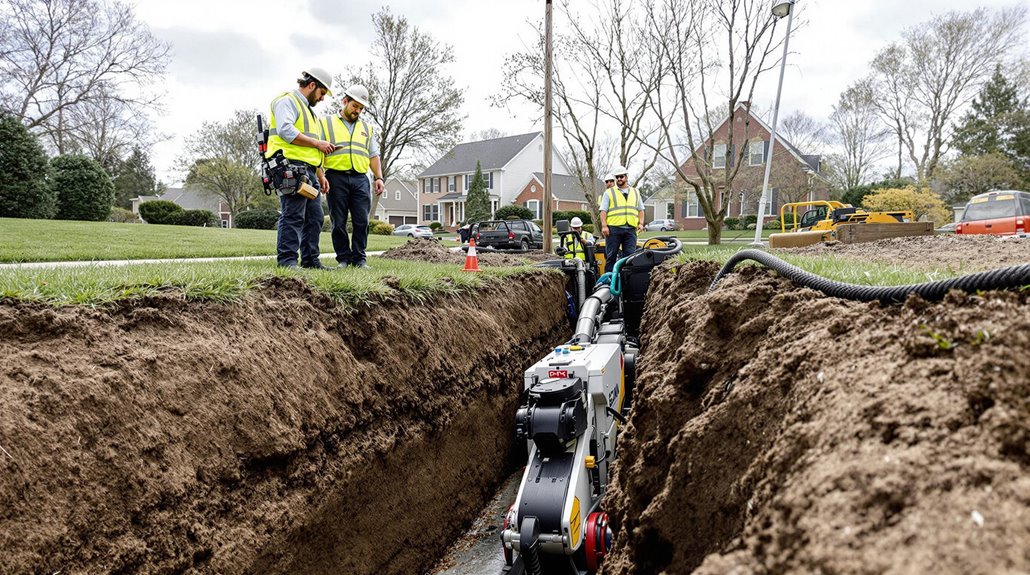
The Public Claims Adjusters Network (PCAN) operates as a professional organization connecting licensed public adjusters who advocate for policyholders during insurance claims processes.
These professionals specialize in policy review, damage assessment, and claims negotiation strategies to guarantee fair settlements. Public adjuster roles encompass extensive claim management, from initial documentation to final resolution.
PCAN members deliver specialized expertise in multiple areas:
- Thorough analysis of insurance policies to identify all available coverage options
- Strategic negotiation with insurance carriers to maximize claim settlements
- Expert assessment of repair costs and construction requirements
- Efficient claims processing to expedite policyholder compensation
PCAN adjusters operate under strict state regulations and fee structures, maintaining professional standards while providing customized solutions for each claim.
Their services extend globally, enabling them to assist diverse clientele with complex insurance matters while ensuring regulatory compliance and adherence to industry best practices.
All network members must demonstrate ethical claim practices through intensive vetting processes including background checks and professional reviews.
Frequently Asked Questions
How Long Does a Trenchless Sewer Line Replacement Typically Last?
Properly installed trenchless sewer replacements demonstrate repair longevity of 50-100 years. The pipe lifecycle extends considerably when quality materials and expert installation techniques are implemented, with regular maintenance.
Can Trenchless Repairs Be Done in Freezing Weather Conditions?
Like a resilient Arctic explorer, trenchless technology operates effectively in cold weather through specialized equipment and techniques, including thermal protection systems and frost-resistant materials for underground infrastructure repairs.
What Warranties Are Typically Offered for Trenchless Sewer Repairs?
Warranty coverage for trenchless repairs typically includes extensive service guarantees spanning 10-50 years, covering materials, workmanship, and system functionality, with specific conditions regarding maintenance and transferability requirements.
Are There Specific Pipe Materials That Cannot Undergo Trenchless Repairs?
Pipes containing hazardous materials like asbestos, non-detectable materials, and severely deteriorated metal pipes present significant material compatibility challenges for trenchless repairs, often requiring traditional excavation methods for replacement.
How Soon Can You Use Plumbing After Trenchless Sewer Line Installation?
Like clockwork, post-installation plumbing becomes operational after installation drying completes. The curing process typically takes between one hour to two days before regular usage can safely resume.
References
- https://www.angi.com/articles/trenchless-sewer-line-replacement-cost.htm
- https://thepipemedic.com/factors-that-affect-the-cost-of-trenchless-pipe-lining/
- https://superbrothers.com/blog/sewer-repair-cost-trenchless-vs-traditional-methods/
- https://www.mrrooter.com/phoenix/about-us/blog/2022/october/how-affordable-is-trenchless-pipe-lining-compare/
- https://www.expresssewer.com/blog/how-much-does-trenchless-sewer-repair-cost-in-california
- https://www.expresssewer.com/blog/what-is-trenchless-pipe-replacement-and-how-much-does-it-cost
- https://jollyplumbing.com/how-does-trenchless-sewer-line-replacement-work/
- https://sekisui-spr.com/blog/2021/05/17/trenchless-sewer-repair-costs/
- https://theplumbersplumber.com/what-affects-trenchless-sewer-repair-cost/
- https://www.bankrate.com/homeownership/what-types-of-plumbing-pipes-cost-the-most/
